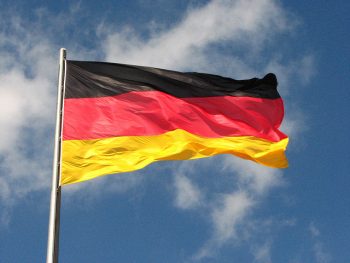4 Easy Grammar Rules to Remember when Learning German Posted by Larissa on Feb 27, 2018 in Grammar
When i was learning German in school I never understood the grammar. All the different rules of when the article changes and so on always confused me. These four tips have helped improve my German and are so easy to remember! Let me know if they help you too.
1. What article to use when using plural
The easiest thing to remember is that the article always changes to “die” when using plural. The noun however almost always changes, either adding an -en, -e, -s or -er but the article will always be “die” when using plural (in the nominative form). Here are some examples:
Singular Plural English
der Tisch die Tische the table(s)
die Tür die Türen the door(s)
der Kuchen die Kuchen the cake
der Teilnehmer die Teilnehmer the participant(s)
2. When the verb automatically goes to the end of a sentence
If you are using “weil” (because) or “dass” (that) in a sentence the verb will always goes to the end. Here are some examples:
Ich liebe heisse Schokolade, weil sie cremig ist
I love hot chocolate because it is creamy
Ich mag Montags nicht, weil ich früh aufstehen muss
I don’t like Mondays because I have to get up early
Ich glaube, dass du mir nicht zuhörst
I think that you aren’t listening to me
Ich möchte, dass du ins Bett gehst
I would like you to go to bed
3. How to pronounce “ie” and “ei”
Not directly grammar, but still a good rule to learn when speaking German. The trick is to always look at and pronounce the second letter. For example, das Ei (the egg) has the letter “i” second, which means you pronounce it as you would say the letter “I” {eye} . The word die Biene (the bee) has the “e” after the “i” which means you pronounce it as the letter “e” {ee}.
4. All nouns have a capital letter
Unlike in English where only proper nouns have a capital letter; every object in German has a capital letter. For example.
der Boden the floor
die Tasse the cup
die Kartoffeln the potatoes
I think one of the biggest things that helped my German become fluent is to not over think it, if you’re in a conversation you don’t have enough time to keep thinking “is that der, die or das?” and so on. If I’m unsure then I look up the grammar rule later.
I hope you enjoyed the post!
Larissa

Build vocabulary, practice pronunciation, and more with Transparent Language Online. Available anytime, anywhere, on any device.





Comments:
VolkerZinser:
I have recommend you for trying a schwierige Sprache, but certain things are just not right and could easily be checked:
…weil SIE (nicht es) creamy ist, … DIE Schokolade
…MIR nicht zuhörst, nicht mich … man kann mich anhören, aber es muß …mir zuhören sein
Larissa:
@VolkerZinser Thanks Volker for the corrections!
I’ve updated the post 🙂
Larissa
Paul:
Thanks Larissa – I head to Germany a few times a year and am trying to learn a little language – you’ve been helpful! I wish it was more like The Matrix… where I could just download German into my brain… Cheers!